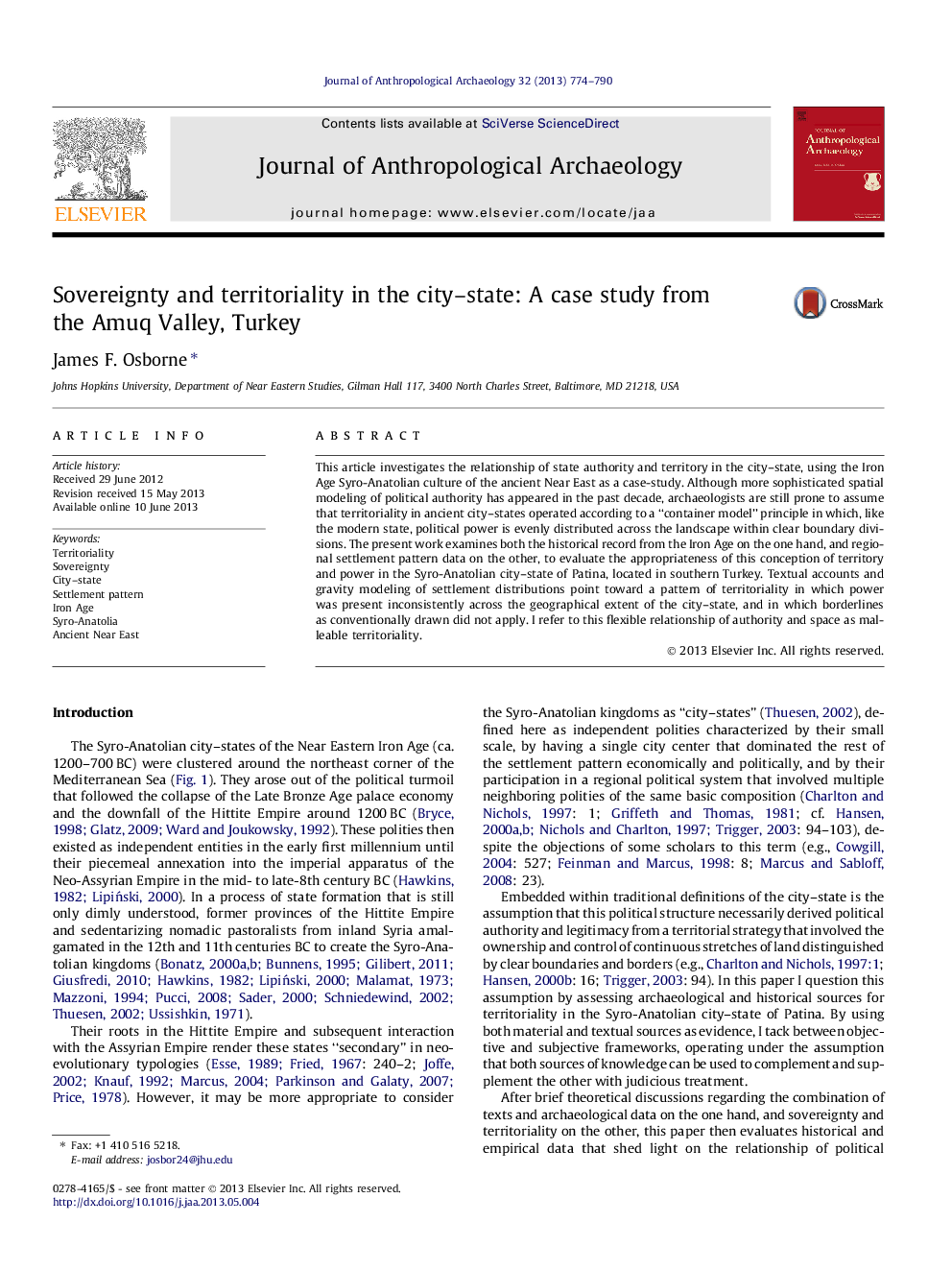| Article ID | Journal | Published Year | Pages | File Type |
|---|---|---|---|---|
| 10498726 | Journal of Anthropological Archaeology | 2013 | 17 Pages |
Abstract
This article investigates the relationship of state authority and territory in the city-state, using the Iron Age Syro-Anatolian culture of the ancient Near East as a case-study. Although more sophisticated spatial modeling of political authority has appeared in the past decade, archaeologists are still prone to assume that territoriality in ancient city-states operated according to a “container model” principle in which, like the modern state, political power is evenly distributed across the landscape within clear boundary divisions. The present work examines both the historical record from the Iron Age on the one hand, and regional settlement pattern data on the other, to evaluate the appropriateness of this conception of territory and power in the Syro-Anatolian city-state of Patina, located in southern Turkey. Textual accounts and gravity modeling of settlement distributions point toward a pattern of territoriality in which power was present inconsistently across the geographical extent of the city-state, and in which borderlines as conventionally drawn did not apply. I refer to this flexible relationship of authority and space as malleable territoriality.
Related Topics
Social Sciences and Humanities
Arts and Humanities
History
Authors
James F. Osborne,
